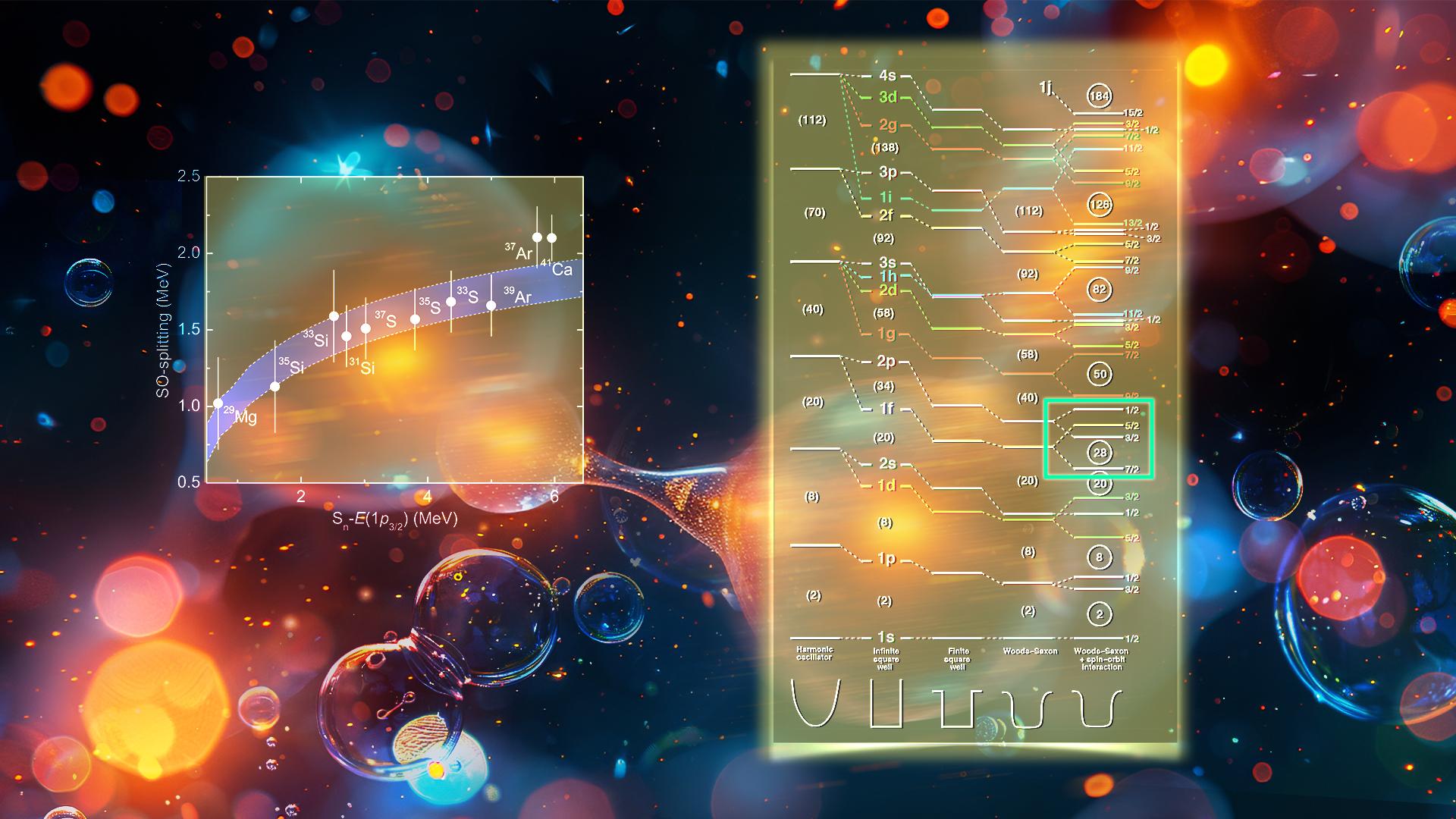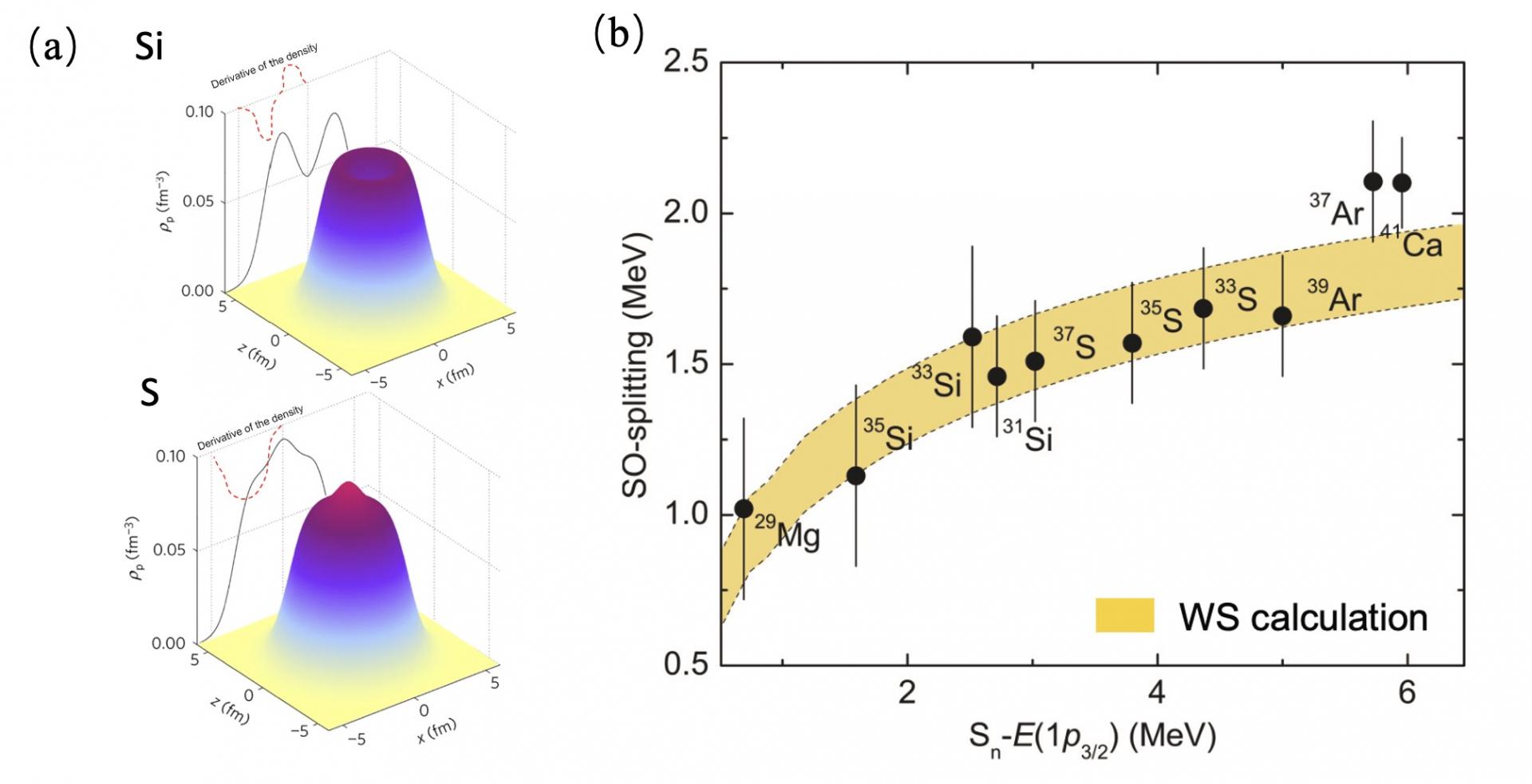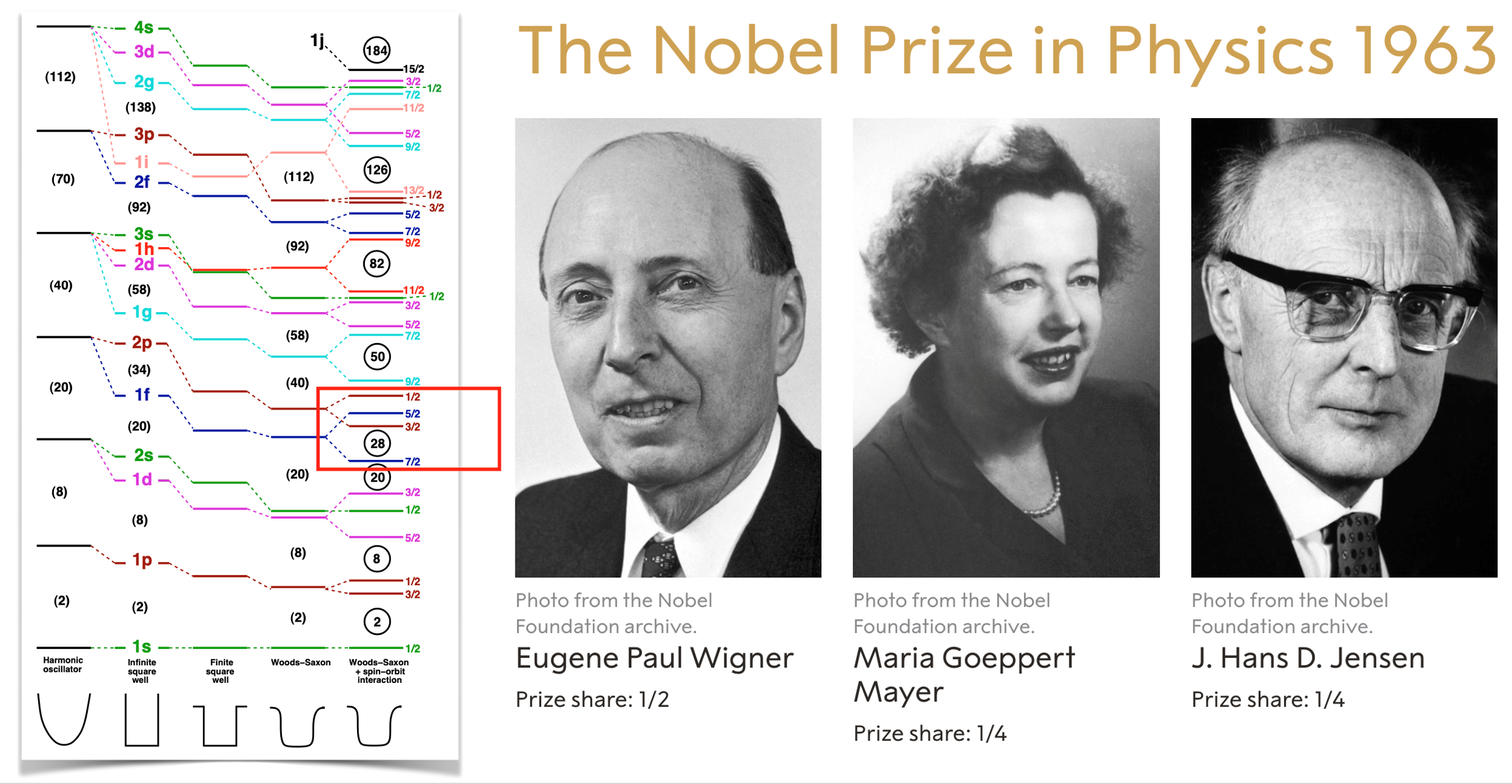Researchers reveal evolution of spin-orbit splitting near silicon isotope chains
2024-05-30
Spin-orbit coupling is a phenomenon in quantum physics that involves the interaction between the spin of a particle and its orbital motion. This effect is important in many fields, such as condensed matter physics, molecular physics, atomic physics, and atomic nuclear physics. In condensed matter physics, spin-orbit coupling has important effects on the electronic structure and properties of materials, such as magnetism, electrical conductivity, and optical properties. In the atomic nucleus, the spin-orbit coupling effect is used to explain the “magic number” of the nucleus.
A neutron or proton has two possible spins in the nucleus: spin up or spin down. The combination of spin and orbital motion in the nucleus is known as the total angular momentum. When the orbital and spin motions coincide, the total angular momentum is maximized and the particle energy decreases. On the contrary, if the orbital motion is opposite to the spin motion, the energy of the particle increases. The “magic number” corresponds to the maximum energy gap between all such energy level transitions, giving the boundary of the nuclear shell closure. Physicists Maria Mayer, Hans Jensen, and Eugene Wigner were awarded the 1963 Nobel Prize in Physics for this discovery.

Assistant Professor Jie Chen’s research group from the Department of Physics and the Center for Nuclear Physics and Nuclear Astrophysics (CNAP) at the Southern University of Science and Technology (SUSTech), in conjunction with the Argonne National Laboratory and Michigan State University, have made important progress in the study of spin-orbit splitting of silicon isotope chains by using the U.S. Facility of Rare Isotope Beams (FRIB).
The team conducted a single-neutron transfer reaction experiment to study the evolution of spin-orbit splitting in neutron 1p orbitals through the newly constructed superconducting solenoidal probe (SOLARIS) at FRIB.
Their results, entitled “Evolution of the nuclear spin-orbit splitting explored via the 32Si(d,p)33Si reaction using SOLARIS”, have been published in Physics Letters B, a journal covering particle physics, nuclear physics, and cosmology.

Figure 1. (a) Theory predicts that the isotopes of Si may have a “bubble-nucleus” structure due to vacancies in the 1s1/2 orbitals of the proton, which is thought to lead to an abrupt decrease in spin-orbit splitting; (b) Professor Jie Chen and collaborators found that the evolution of spin-orbit splitting in the vicinity of the Si isotopes is smooth and can be accounted for by the weak nuclear binding effect, which is not consistent with the prediction of a proton “bubble-nucleus” structure.
In this study, 32Si(d,p)33Si reaction measurements have been carried out using SOLARIS. The 33Si excited state energy levels and single-particle intensities were obtained, and the 1p3/2 and 1p1/2 neutron single-particle orbital energy levels were determined. Combined with the existing data, the article investigates the smooth trend of 1p orbital spin-orbit splitting with decreasing binding energy in the N=17,19,21 isotopic chain and thus analyzes the problem of proton “bubble” nuclei, which has attracted much attention in the field in recent years.
This work systematically maps the evolution of spin-orbit splitting in this region by means of single-nucleon transfer reaction experiments, and provides an important insight into the structure of weakly bound nuclei.

Figure 2. The 1963 Nobel Prize in Physics: the shell structure of the atomic nucleus and its proponents. The red box shows the shell structure corresponding to the spin-orbit splitting studied in this experiment.
Assistant Professor Jie Chen of the Department of Physics at SUSTech is the first and independent corresponding author of this paper. SUSTech is the first affiliated unit.
This research was supported by the FRIB ReA6 Beamline, Argonne National Laboratory, and other departments.
Paper link: https://doi.org/10.1016/j.physletb.2024.138678




